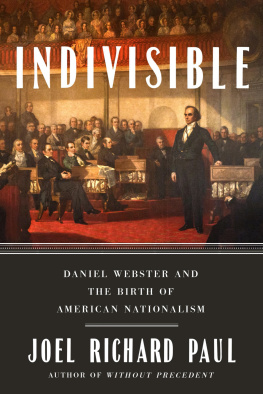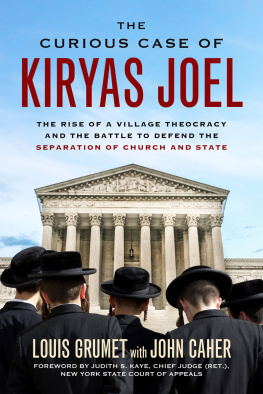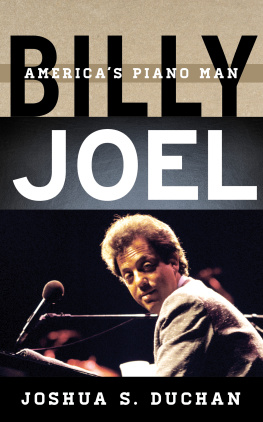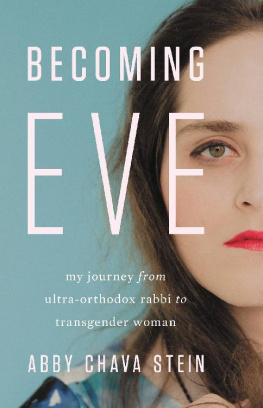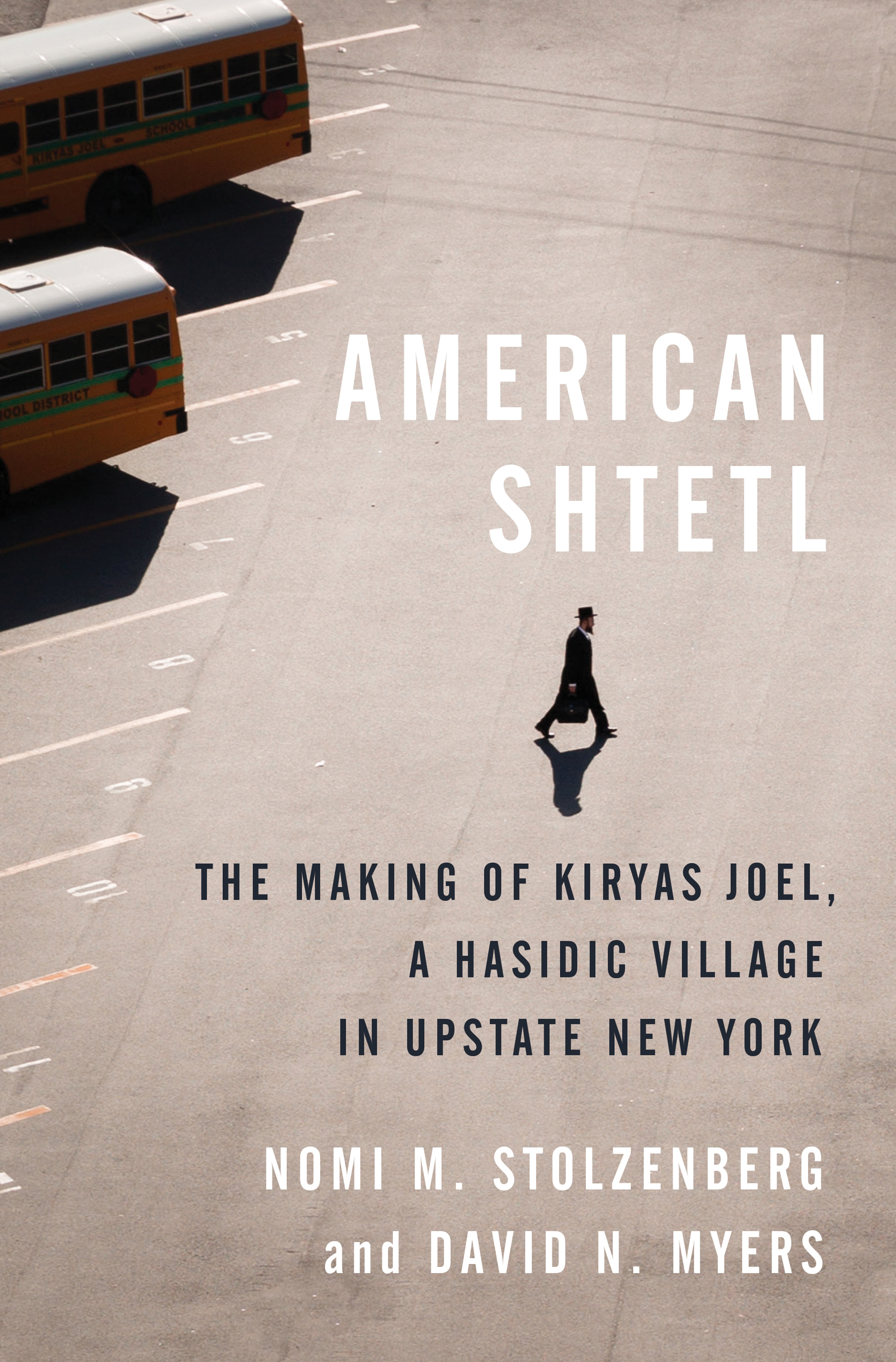AMERICAN SHTETL
American Shtetl
THE MAKING OF KIRYAS JOEL, A HASIDIC VILLAGE IN UPSTATE NEW YORK
NOMI M. STOLZENBERG
DAVID N. MYERS
PRINCETON UNIVERSITY PRESS
PRINCETON & OXFORD
Copyright 2021 by Princeton University Press
Princeton University Press is committed to the protection of copyright and the intellectual property our authors entrust to us. Copyright promotes the progress and integrity of knowledge. Thank you for supporting free speech and the global exchange of ideas by purchasing an authorized edition of this book. If you wish to reproduce or distribute any part of it in any form, please obtain permission.
Requests for permission to reproduce material from this work should be sent to permissions@press.princeton.edu
Published by Princeton University Press
41 William Street, Princeton, New Jersey 08540
6 Oxford Street, Woodstock, Oxfordshire OX20 1TR
press.princeton.edu
All Rights Reserved
ISBN 978-0-691-19977-1
ISBN (e-book) 978-0-691-22643-9
Version 1.0
British Library Cataloging-in-Publication Data is available
Editorial: Fred Appel and James Collier
Production Editorial: Jenny Wolkowicki
Text design: Karl Spurzem
Jacket design: Karl Spurzem
Production: Erin Suydam
Publicity: Maria Whelan and Kathryn Stevens
Copyeditor: Joseph Dahm
Jacket photograph: Jackson Krule
CONTENTS
- vii
- ix
ILLUSTRATIONS
ACKNOWLEDGMENTS
Work on this book has been a source of amazement, exhilaration, frustration, patience, and impatience over the past fifteen years. During that time, we incurred debts to a legion of scholars, students, and interviewees. From the very beginning until the end, we were assisted by Chris McKenna, the crack reporter for the Times Herald-Record in Middletown. Chris knows more about politics in Orange County and Kiryas Joel than almost anyone in the world. He was boundlessly generous in sharing his knowledge, wisdom, and tips. In a very real sense, this book wouldnt have been possible without him.
At the outset of this project, Barry Trachtenberg provided vital research assistance and ethnographic analysis. Already at that point, as an early-career graduate student, Barry understood the multiple layers of our historical and legal interests and helped to build up an archive of materials that has furnished us to this day. Barry has since gone on to have a productive scholarly career of his own, but his work for us was foundational.
For his unparalleled range of bibliographic knowledge and network of contacts, we thank the inimitable and irrepressible Menachem Butler. Among other gifts, he opened the door to a number of acquaintances in the Satmar world who proved to be invaluable guides.
Among our Satmar sources, regardless of which faction they belonged to, our meetings were almost always productive and pleasant. Even though we appeared as outsiders, we were always treated with courtesy and respect. Frequently, we would be told by an interviewee that he or she did not have much time to talk. And frequently, we would have to excuse ourselves after two or more hours to get to the next meeting. We quickly came to understand that the pathways of curiosity moved in both directions.
Within Kiryas Joel, special appreciation goes to three people: Joel Petlin, the superintendent of the KJ public school, was unstinting in sharing his vast knowledge of education law and the legal affairs of KJ, as well as in providing answers to obscure queries at the drop of a hat. Gedalye Szegedin, the village administrator of KJ (and now town clerk of Palm Tree), is an exceptionally smart and effective public official; despite the fact that he is always busy, he gave hours of time to walk us through his thinking and that of the village and mainstream party leadership. And Shlomo Yankel Gelbman zl was the preeminent chronicler of the Satmar Rebbe and the empire he created, including in KJ. He had not only encyclopedic knowledge of Satmar history, which he generously shared with us, but also a vast web of informants the world over who helped him retrieve every available reference to the life of Joel Teitelbaum, the founding Grand Rabbi of the Satmar Hasidic group. All three men contributed greatly to the research for this book, even though they may all find (or have found) points in it, perhaps many, with which to disagree.
There are dozens of people in Kiryas Joel and Williamsburg to thank for their openness, kindness, candor, hospitality, and knowledge. For reasons of privacy, many prefer to remain anonymous; we honor this request as we express appreciation to them for opening their homes and offices to us. (In a similar vein, we have anonymized most of the names of those with whom we conducted oral interviews.) Special thanks go to two extraordinary guides, Frieda Vizel and Frimet Goldberger, who agreed to meet with us on multiple occasions to share their deep knowledge of the Satmar community in which they once lived; we also thank Ysoscher Katz for his perceptive firsthand insights into the Satmar community. Debra Fisher generously provided information about her father, Oscar, who was instrumental in buying the land that created KJ. And from the beginning, David Pollock, associate executive director of the New York Jewish Community Relations Council, generously shared his vast knowledge of Hasidic and Satmar life in New York.
In helping to make sense of the often-labyrinthine legal world surrounding KJ, we thank Louis Grumet, the lead plaintiff in the case that brought the village of Kiryas Joel to wide public attention, and Michael Sussman, Jay Worona, and the other lawyers who shared their recollections and legal yarns with us. Veteran reporter Oliver Mackson also provided us with valuable leads and information about various aspects of life in Kiryas Joel.
Over the long period of germination of this book, we had the opportunity to present pieces of it solely and jointly in dozens of institutions including the University at Albany, the University of Pennsylvania, Ben Gurion University, Cardozo Law School, the Graduate Theological Union, Fordham, Haifa University, the Hebrew University, NYU, the Ohio State University, Tel Aviv University, the University of Chicago, the University of Illinois-Champaign/Urbana, UCLA, UC Santa Cruz, the Van Leer Institute in Jerusalem, and the YIVO Institute for Jewish Research. Thanks to those institutions, as well as to these colleagues whose comments improved this book greatly: Orit Avishai, Ayala Fader, Abner Greene, Sam Heilman, Shaul Magid, Naomi Seidman, and Suzanne Stone. We extend a special debt of gratitude to the late lamented William Helmreich zl, a wonderful character, raconteur, city walker, and scholar of Orthodox life who offered typically perceptive comments on a number of chapters. We, of course, are responsible for any errors in the book.
For their help with research on this project, we thank Stephanie Chasin, Talia Graff, and Lindsay King at UCLA. This book was so long in the making that the number of USC law students who assisted with this project borders on the absurd. That long list includes John Acevedo, Chris Lim, Laura Walluch, David Sheasby, Sarah Truesdell, Donna Chang, David Avraham, Zachary Davidson, Amy Steelman, Christopher Chen, Edrin Shamtob, Aida Bagdasaryan, JaMesha Morgan, Stephanie Rector, Emma Tehrani, Jack Merritt, Will Mavitty, Hannah Waldman, and the late Maren Wright. Mark Smith answered questions about Yiddish throughout the process. Chaim Seidler-Feller, close friend and intellectual partner, addressed queries related to Jewish law with typical perspicacity; on thorny linguistic matters, Shaul Seidler-Feller and Aryeh Cohen offered sage advice. In New York, we had the good fortune to meet Mordechai Friedman, who provided invaluable research assistance with the Yiddish pressand, later, drew on his emerging architectural talents to create a number of maps for this book.


